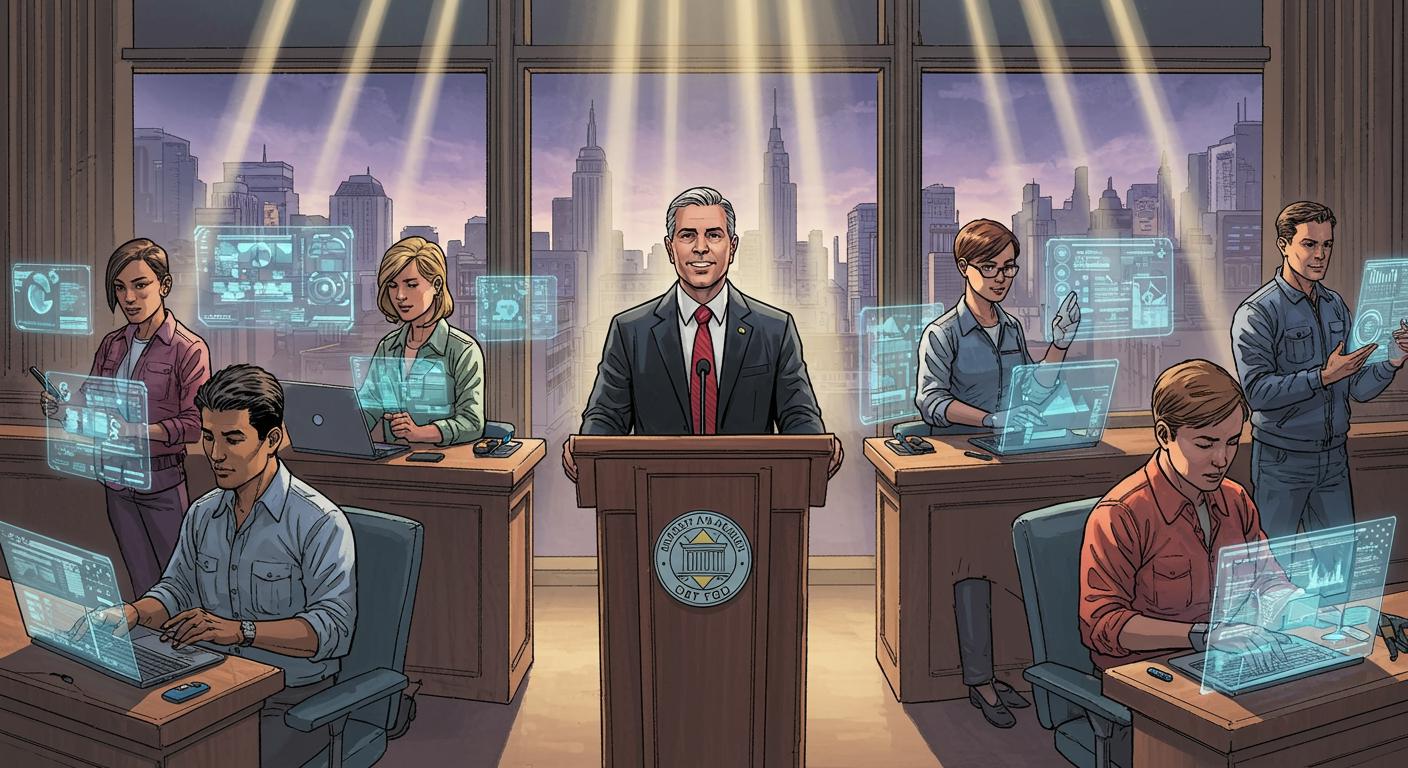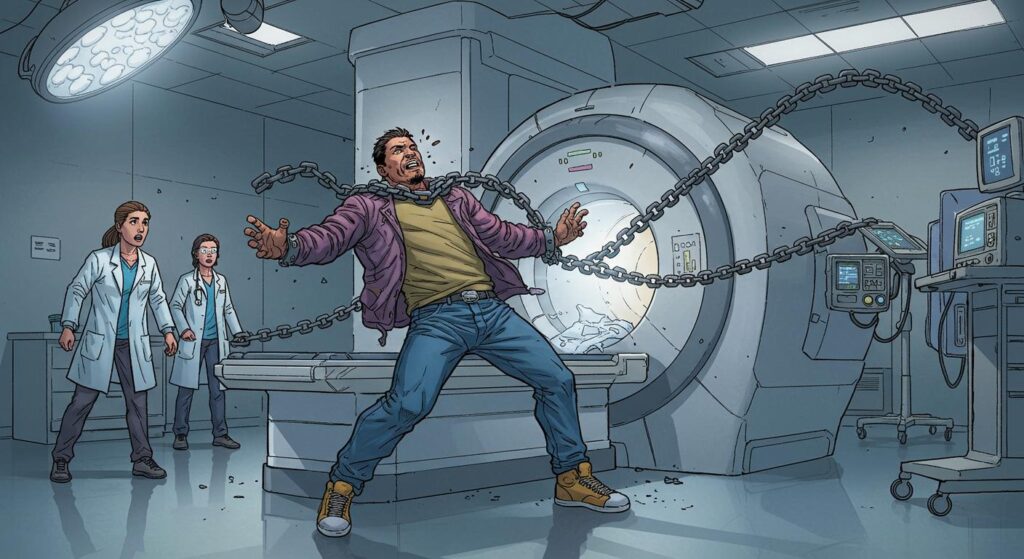Sometimes, government innovation arrives not in the grand unveiling of a flying car, but in the invisible hand (or algorithm) behind a mayor’s talking points. Case in point: San Jose Mayor Matt Mahan, whose embrace of ChatGPT is nothing short of transparent—and ambitious. If you’re picturing a local leader quietly texting AI for a catchy line about potholes, think bigger. According to the Associated Press, Mahan is rallying to give a thousand city workers AI tools for daily government life—everything from drafting speeches to handling complaints about bus routes.
It’s a move that feels at home in Silicon Valley, but it’s the candor about it that stands out. As recounted in both StartupNews.fyi and the Livingston Enterprise, the mayor is not only letting the chatbot into the conference room, he’s waving at reporters as it takes a seat.
When Bureaucracy Meets Bot
For any fans of work process optimization (you’re out there, right?), the details are genuinely intriguing. Mahan, whose week includes tasks as varied as launching restaurants and prepping for lowrider car festivals, sees AI as a way to strip the bureaucracy of its more tedious rituals. Aides aren’t just feeding the AI ceremonial fluff—they’re drafting budgets and background memos, according to both AP and coverage relayed by Livingston Enterprise. Few other city officials would so openly admit to an algorithm’s fingerprints on a $5.6 billion city budget, but here we are.
One notable early adopter, as StartupNews.fyi highlights, is Andrea Arjona Amador of the city’s transportation department. She built out a custom AI assistant to wrangle paperwork for grant applications, ultimately securing a $12 million deal for more electric vehicle chargers. Gone (allegedly) are countless evenings stuck with dense forms. Of course, not every bot-powered proposal survives in the wild—the Trump administration recalled at least one round of funding, which no algorithm could have foreseen.
As summed up by several outlets, San Jose has paid upwards of $35,000 for nearly 90 ChatGPT licenses so far. It isn’t exactly a shoestring experiment, but in the land of billion-dollar city budgets, it barely qualifies as a bold line item.
Productivity Promises and AI Potholes
The vision expands well past speechwriting. San Jose’s AI experiments extend to triaging infrastructure complaints, drafting human resources forms, and even flagging surveillance footage in law enforcement contexts. Both the AP and StartupNews.fyi remark on the mayor’s desire to banish the grunt work that clings to municipal life, with the extra hope of serving the city’s million residents markedly faster.
Across the bay, San Francisco has rolled out Microsoft’s Copilot for tens of thousands of workers—including nurses and social staff—with similar assurances of privacy controls and bias safeguards. Promises abound that these tools are meant to support, not replace, human judgment. But isn’t that always the pitch at the outset? In neighboring communities, as previously noted by the AP, budget realities have already led some, like Stockton officials, to cool on the idea after testing proved costly.
Yet while San Jose’s pilot has managed to avoid major gaffes so far, tales of “hallucinations” (the AI kind, not the poetically inspired variety) emerge frequently in other corners of government. The AP points to a federal health commission mix-up and a Fresno school debacle—prime examples of what happens when an AI’s confidence outpaces its accuracy. If you’ve ever watched spellcheck massacre an email chain, the need for old-fashioned skepticism becomes clear.
Humans With AI Assistants (For Now)
What stands out in San Jose’s story is not only the adoption of AI, but the mayor’s loud-and-proud approach to it. As the AP documents, Mahan is happy to highlight both the promise and the pitfalls, urging, “You can’t just kind of press a couple of buttons and trust the output.” The human remains firmly “in the loop” for now—checking, questioning, and ideally, remembering to apply common sense before sending that grant proposal into the void.
For those keeping an eye on the bottom line, analysts at Gartner—referenced in AP’s coverage—forecast that over 40% of these so-called “agentic AI” projects will collapse by 2027. The culprits: unexpected costs, uncertain outcomes, and the classic bureaucratic aversion to risk. So, is this the dawn of a new era where city workers are suddenly freed from the spreadsheet mines, or just a new coat of digital paint on endless paperwork?
Red Tape, Version 2.0
If there’s poetry in bureaucracy, it may lie in the optimism of every attempt to make it “twice as efficient.” Mahan speculates city staff could become 20–50% more productive—assuming the AI behaves and deadlines don’t get lost in the shuffle. The city’s experiment, as observed by both Livingston Enterprise and StartupNews.fyi, is already affecting the work-life balance of its engineers and administrators. If nothing else, a Sunday evening spared is a small win.
But if AI can churn out vast amounts of official text in mere minutes, will the dam of paperwork ever truly break, or will it just flow a little faster? Is the real achievement here a streamlined city government, or simply the candor of a mayor admitting his speeches now have a dash of algorithm in the mix? One has to wonder, if all this automation is aimed at serving residents more efficiently, do citizens even notice, or does that distinction disappear the moment the chatbot says, “Your request has been received”?
The strangeness of modern governance may not always be visible from the outside, but inside city hall, it’s already speaking in a quiet, slightly robotic voice. Whether that voice delivers more than smoother prose or faster memos—well, the real test is still unfolding.







